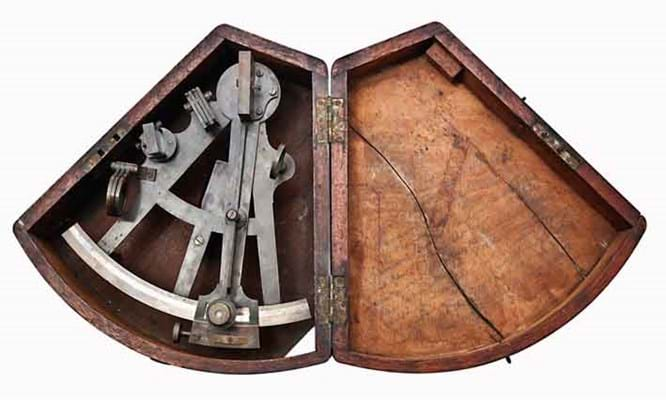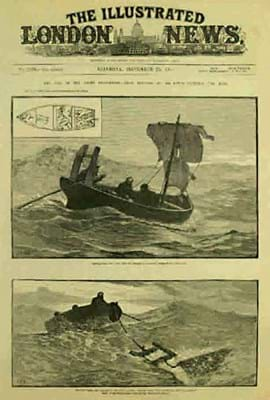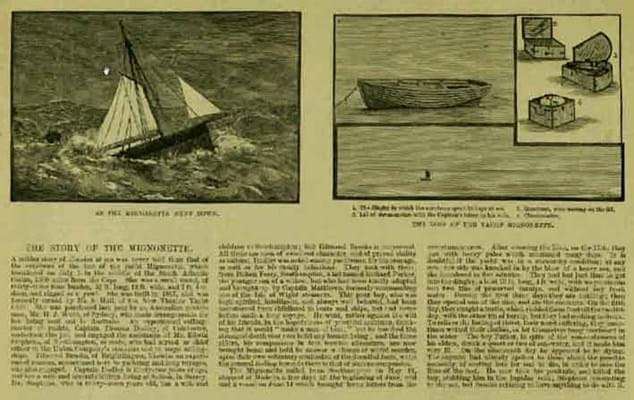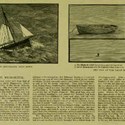It makes a harrowing story of woe in itself. But this was no ordinary shipwreck.
That inscription was made by the survivors of the yacht Mignonette in 1883. When finally rescued they faced another life-and-death challenge, hauled before the court in what became Britain's last trial for cannibalism at sea.
The 7½in (18cm) radius brass sextant sold at Charles Miller (20% buyer's premium) on November 3 to a commission bid of £5500 (estimate £1000-1500).
After giving daily positions in latitude and longitude, the inscription reads: To whoever picks this up / Sunday July 20th PM / We Thomas Dudley, Edwin Stevens [Stephens], / Edmund Brookes & Richard Parker, / the crew of the Yacht Mignonette which / foundered on Saturday the 5th. of July, have / been in our little dinghy 15 days. We have / neither food or water and are greatly reduced / We suppose our Latitude to be 25º South our Longditude / 28ºW May the Lord have mercy upon us / please forward this to Southampton.
Southampton to Sydney
The Mignonette was a cruising yacht designed for inshore sailing only. But when she was bought in 1883 by Australian lawyer John Want, he arranged, after some difficulty, with Dudley (the captain) and the three crew to take on the 15,000-mile voyage from Southampton to Sydney.
On July 5 a rogue wave about 1,600 miles off the Cape of Good Hope smashed away a bulkhead and the yacht sank within five minutes.
Scrambling into the flimsy open dinghy, the crew only had time to grab this sextant, a chronometer, and two tins of turnips, but no water. By July 17 the possibility of drawing straws to be sacrificed was being discussed.
It seems that the Parker's ill heath sealed his fate and, on or near July 24, Stevens (also known as Stephens) cut his jugular vein so they could drink his blood. They fed off his body for the next few days, but on July 29 a sail was spotted and the German barque Montezuma rescued them.
When the survivors were delivered to Falmouth, Cornwall, on September 6, candid statements were given to the authorities in the mistaken belief they were protected by a 'Custom of the Sea'.
As no such custom had been created in law, these statements formed the basis of the evidence against them in a trial that began on November 3.
Public opinion swung firmly behind the unfortunate seamen.
However, a young and ambitious barrister called William Danckwerts was determined to pursue a conviction of murder on the High Seas. Brooks was acquitted, but Dudley and Stephens were found guilty and sentenced to death. The public outcry was such that this was commuted to six months' imprisonment.
Sydney Estate
After the trial was over, Want offered Dudley a new start in Australia and he opened a chandlery in Sydney, presumably taking this sextant with him. It was acquired by Moghul Antiques, Adelaide, from a deceased estate in Sydney. The vendor bought it from Moghul in 1973.
Charles Miller says: "Although it was bought in Australia, the vendor lives in Wiltshire. I think he bought it just as a sextant, not for the Mignonette interest, but he spotted the markings in the lid. He uncovered the whole story from those markings.
"An American lad and his mother bought it as a present for his father who apparently has a connection to the Mignonette. We don't really know how.
"He faced strong institution interest from two bidders not far behind him, one Australian, one UK. The UK one got in touch afterwards and they say they may be able to organise a loan from the new owner to put the sextant on display."











